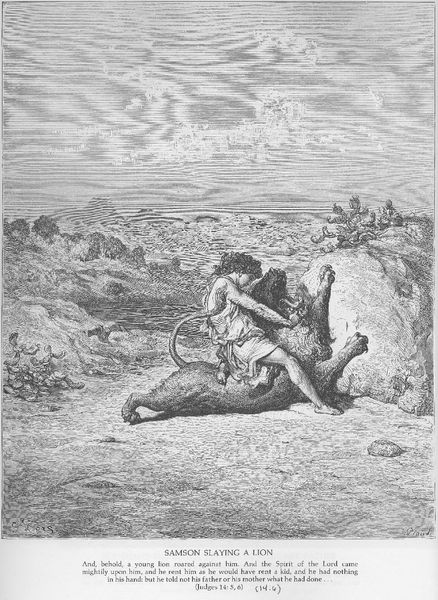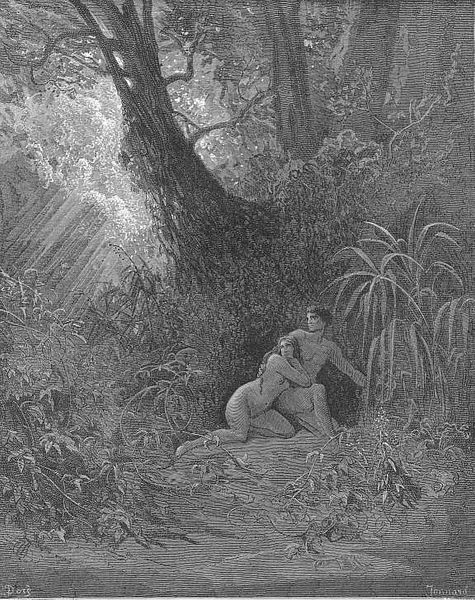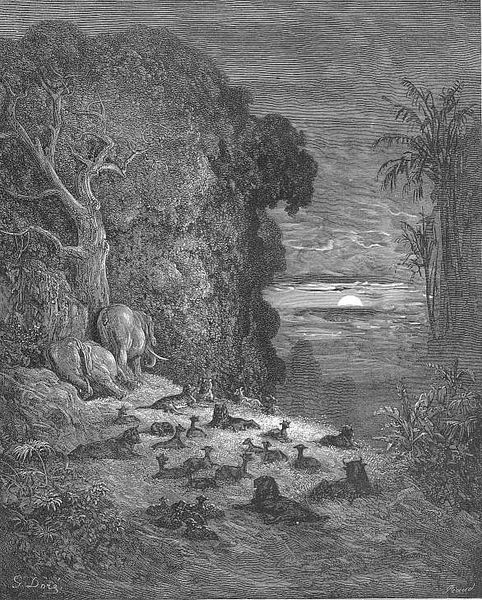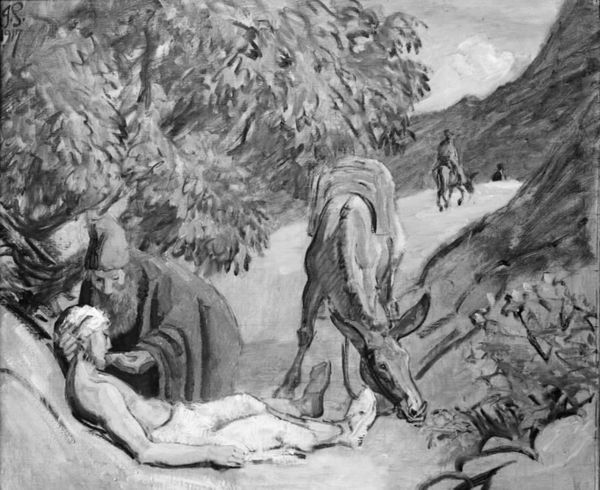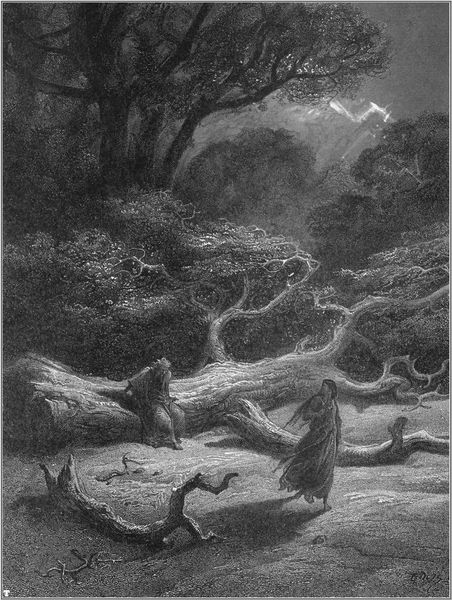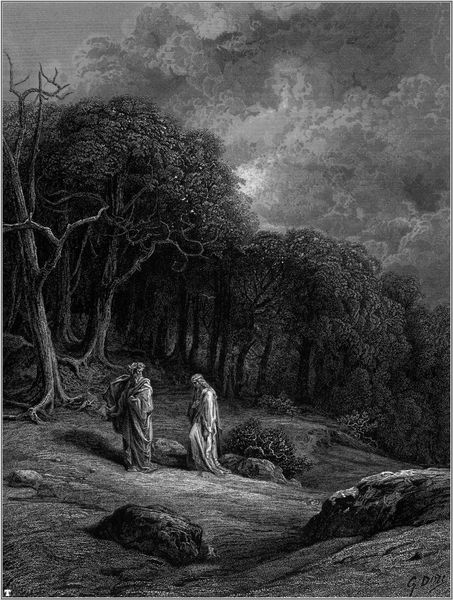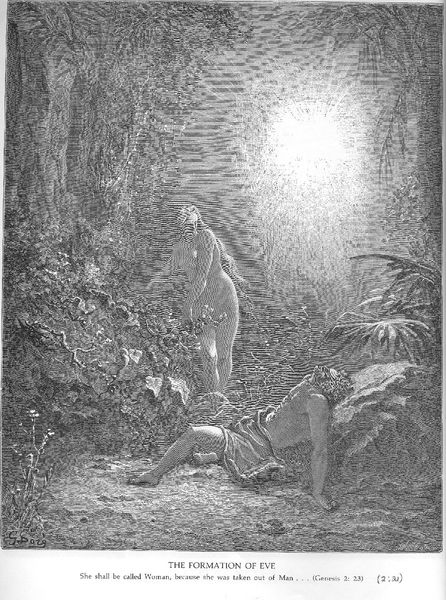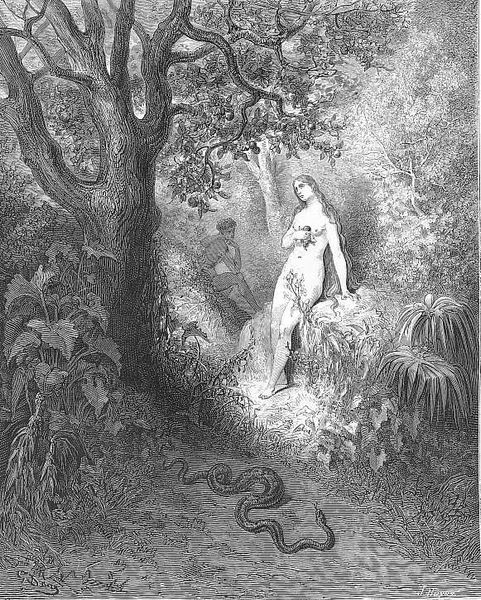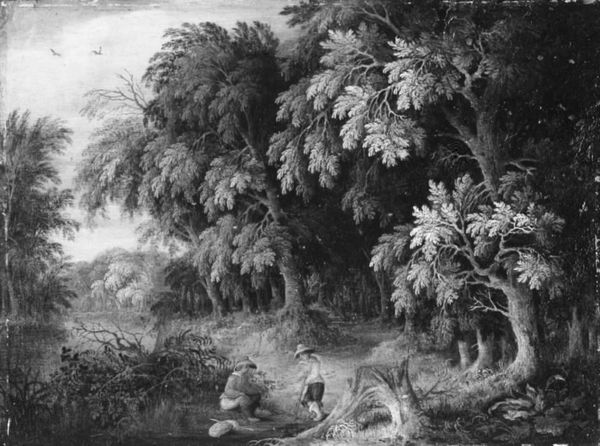
So parted they the Angel up to heaven From the thick shade, and Adam to his bower
0:00
0:00
engraving
#
landscape
#
monochrome colours
#
figuration
#
romanticism
#
black and white
#
monochrome photography
#
line
#
history-painting
#
monochrome
#
nude
#
engraving
#
monochrome
Copyright: Public domain
Curator: Gustave Doré’s engraving, “So parted they…the Angel up to Heaven From the thick shade, and Adam to his bower,” presents quite a poignant moment, wouldn’t you agree? Editor: It’s strikingly melancholic. The light seems to drain away with the departing angel, leaving Adam and Eve in almost desolate shadows. It's dramatic! Curator: The stark black and white emphasizes the sense of loss and the shift in their world. Consider the Victorian era's fascination with Milton's Paradise Lost. Doré's commercial illustrations, mass-produced as engravings, made high art accessible. Editor: The details in the engraving are mind-blowing, given it's all lines, no colors at all! Did he do this freehand, or did they have some other methods? I am thinking that a tool and a surface were used, along with his mastery, to reach this kind of outcome. The tonal range feels so expressive... like a whispered secret. Curator: The cross-hatching technique would’ve demanded meticulous labor. Doré understood the marketplace: an artistic commodity for middle-class consumption. We cannot separate its artistry from its industrialized origins. Editor: Okay, but setting that aside, isn't there something heartrending about their postures? The way Adam seems to be shielding Eve. What is she feeling here? Curator: Certainly, Doré captured their vulnerability after the expulsion. Their nakedness underscores that sense of exposure and the social expectations of modesty at the time of production and consumption. Editor: Absolutely. Maybe this engraving taps into that lingering awareness we have as humans - how society always wants you to dress, to do, to be... Maybe these engravings were subversive reminders that there could have been a before to this time. Curator: A moment of utopian speculation embedded within industrial production. How curious! Editor: Yes, it is like we are now spectators, but what exactly are we watching? Curator: Well, this reflection reminds me that our engagement with an image reshapes its meaning. Doré's engraving becomes, itself, a commodity through interpretation, which I believe only makes its afterlife richer.
Comments
No comments
Be the first to comment and join the conversation on the ultimate creative platform.



